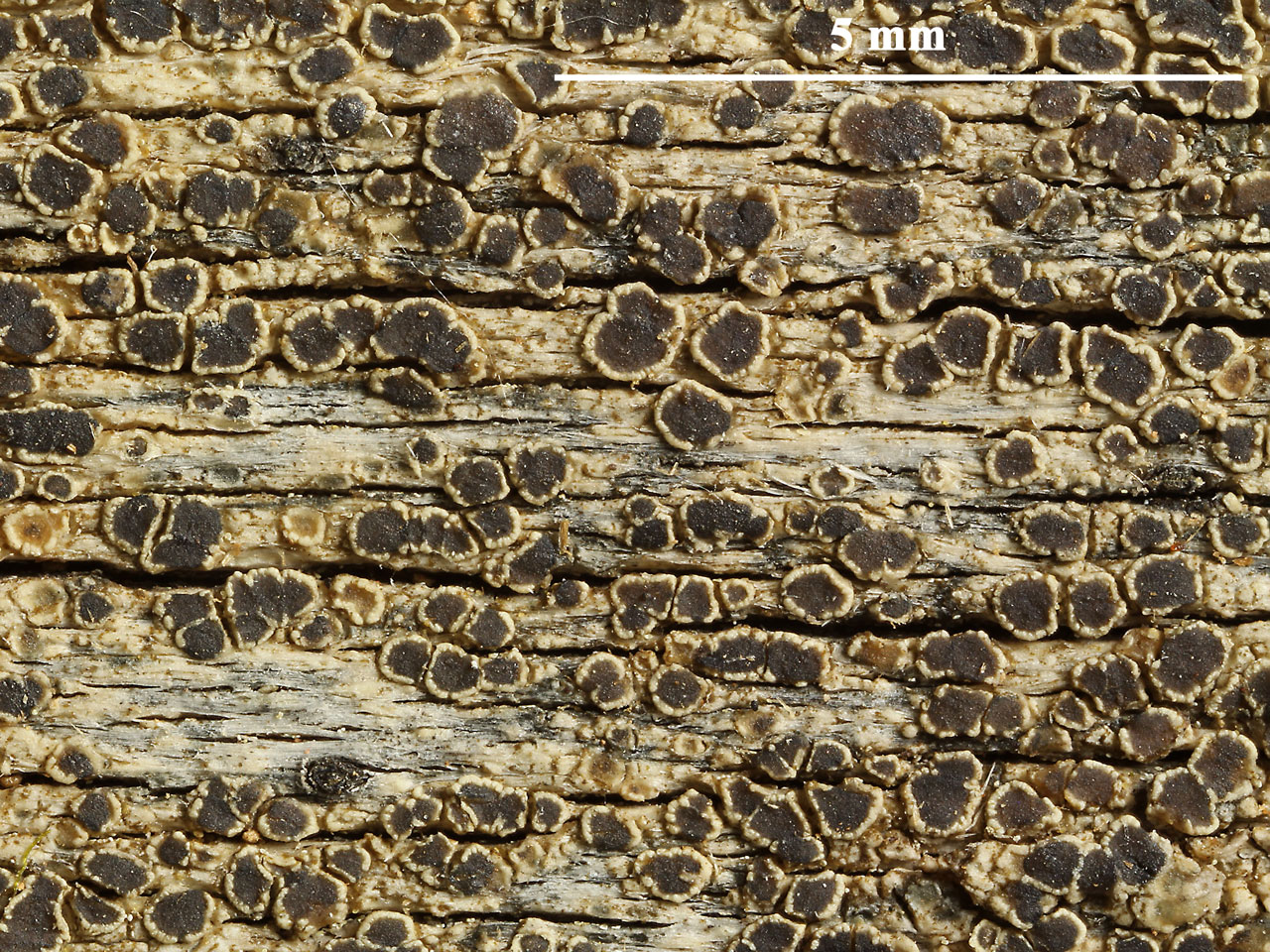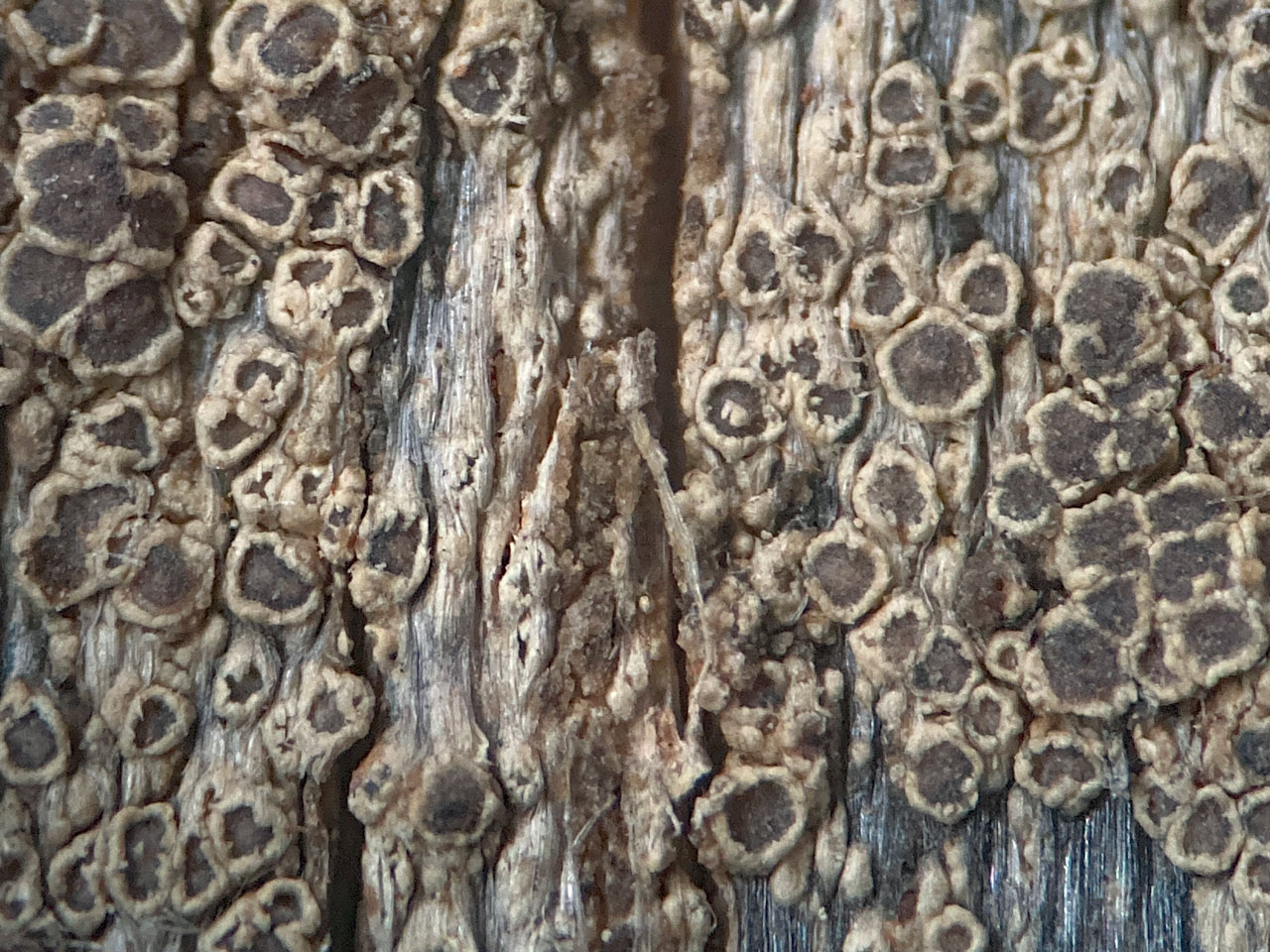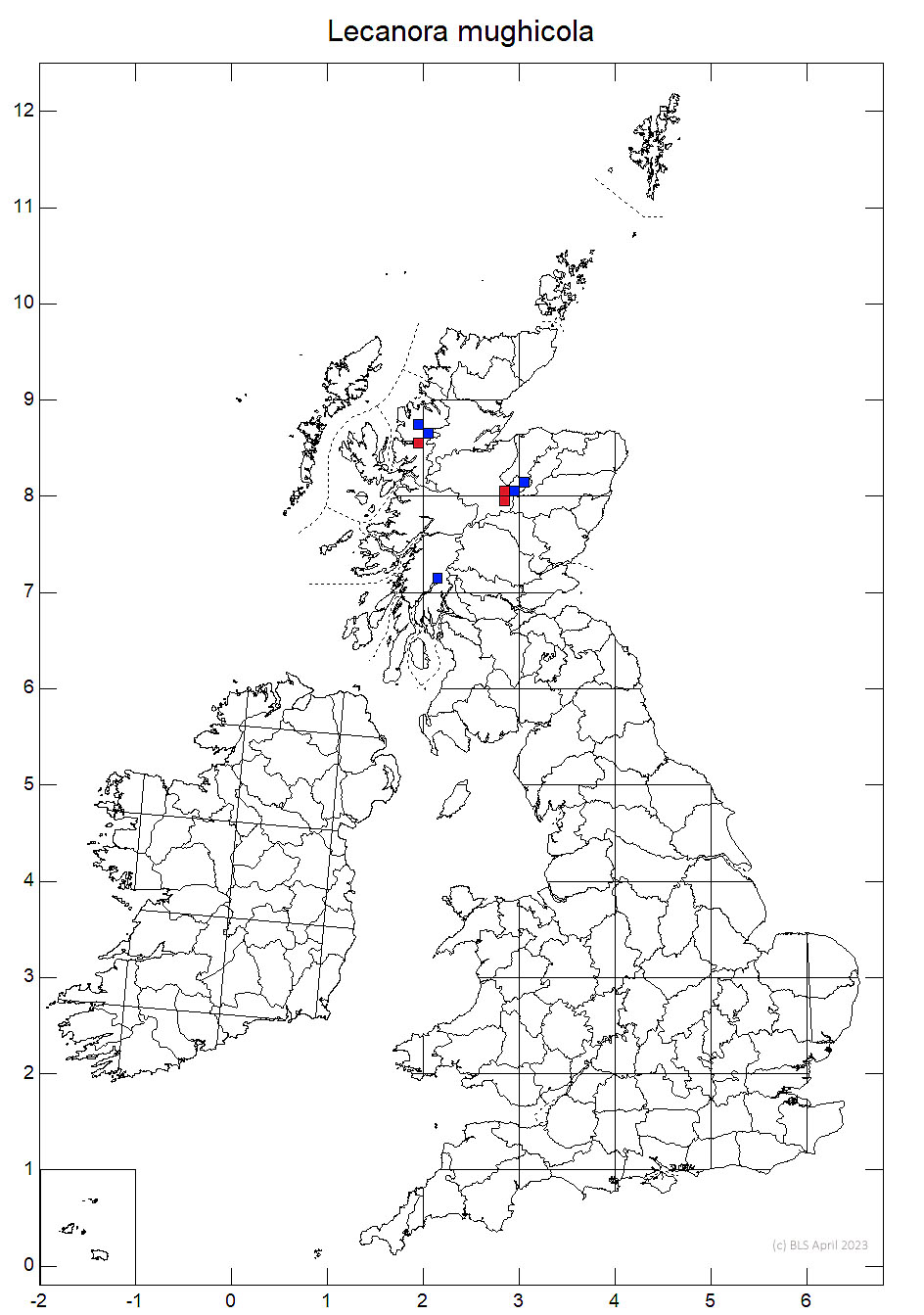Lecanora mughicola
A rare but distinctive species found on well lit hard lignum of dead pine trees in native pinewoods where it is confined to the Strath Spey and Loch Maree native pinewoods. The combination of the dark disks and the yellowish thallus is dsitinctive in the habitat.
Thallus wide-spreading, uneven, continuous, ± rimose-cracked, whitish-grey or yellowish-grey to grey or fawn-grey to dark brown, rarely with a green hue, the surface matt or shiny and appearing waxy, or sometimes endophloedal, not sorediate. Apothecia numerous, scattered or more often becoming contiguous, occasionally fused, evenly rounded at first, becoming irregularly rounded to somewhat angular, innate but becoming sessile, 0.4–0.7 mm diam., thalline margin concolorous with the thallus, thick, raised and smooth to subrugose in young apothecia, becoming uneven and level with the disc when older, at times almost nodular, persistent; disc rarely concave at first, generally flat, becoming weakly convex, minutely roughened, matt, brown to jet black, less frequently pale ochre to light brown, red-brown or dark blue-grey; hymenium 50–65 μm tall, colourless; epithecium brown to dark olive-brown, with a layer of golden-brown granules above that dissolve in KOH. Ascospores 12–14 × 4.5–5.5 μm, wall ca 1 μm thick. Conidia of three types: microconidia [rare], 6–9 × 0.8–1 μm, bacilliform to slightly curved; leptoconidia [frequent], 16–20 × 0.8– 1 μm, strongly curved; mesoconidia [rare] 3.5–4 × 1.5–2 μm, bacilliform. Thallus C–, K–, KC–, Pd–, UV– (isousnic acid).
A member of the Lecanora saligna group. Similar to the widespread L. pulicaris which is K+ yellow and Pd+ orange- red and has a whitish thallus.
On well lit hard lignum of dead pine trees in native Caledonian pinewoods.

Very rare, Scotland, in the Strath Spey and Loch Maree native pinewoods
Only known from two areas of native pinewoods, where appaers to have low popualtion and is a light demanding species of old hard Pine deadwood. Grazing reductions within old growth pinewoods to allow regeneration can lead to increased shade on deadwood unless care is taken. The conservation objectives for native pinewood sites need to take account of the biodiversty importance of the combination of open space and dead wood within this iconic habitat.
Britain: Near Threatened
Scotland: Priority Taxon for Biodiversity in Scotland (Scottish Biodiversity List species)
Cannon, P., Malíček, J., Ivanovich, C., Printzen, C., Aptroot, A., Coppins, B., Sanderson, N., Simkin, J. & Yahr, R. (2022). Lecanorales: Lecanoraceae, including the genera Ameliella, Bryonora, Carbonea, Claurouxia, Clauzadeana, Glaucomaria, Japewia, Japewiella, Lecanora, Lecidella, Miriquidica, Myriolecis, Palicella, Protoparmeliopsis, Pyrrhospora and Traponora. Revisions of British and Irish Lichens 25: 1-83.
Text by Neil A Sanderson based on Cannon et al (2022)


